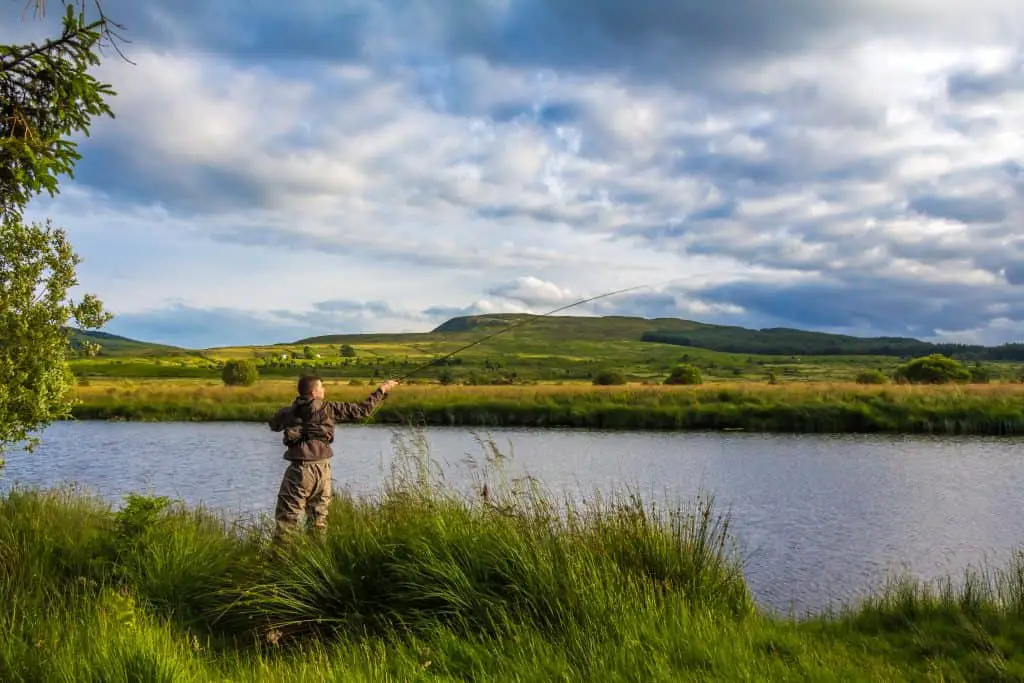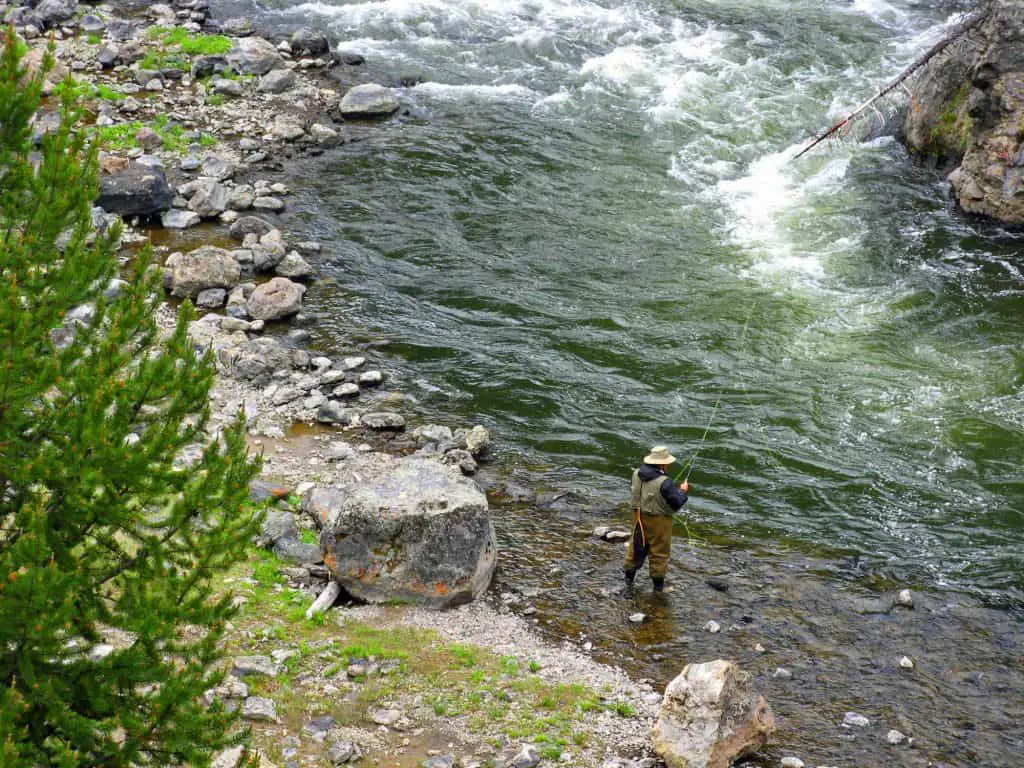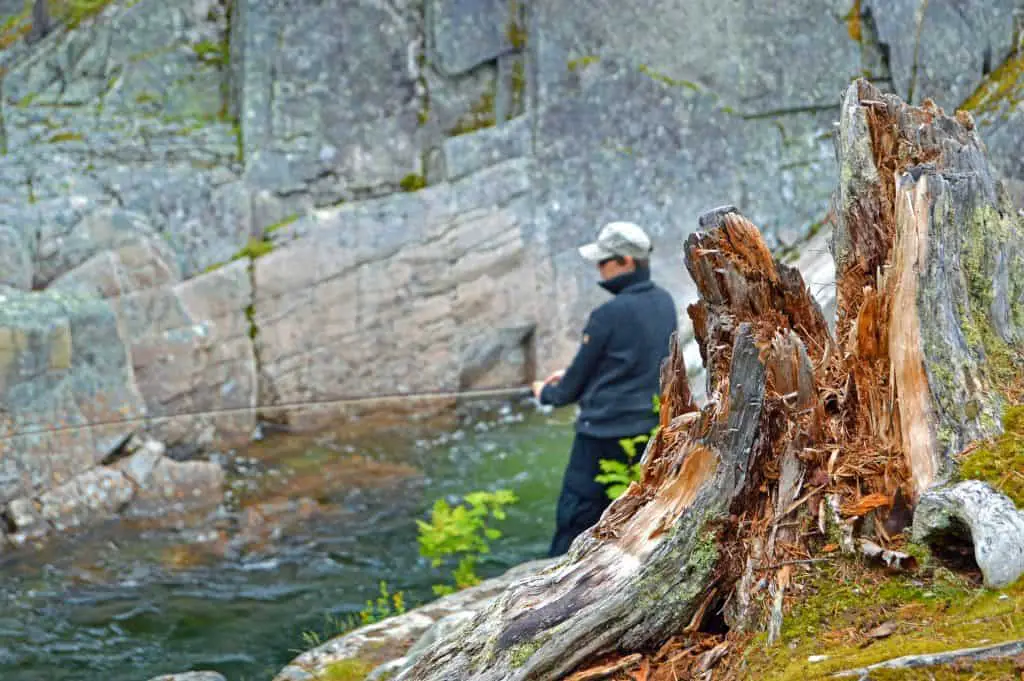Are you finding it hard to hook crappie on your fly fishing combo? Could it be incorrect timing, wrong skills, or wrong choice of place? Anglers who have fished this species from the sunfish family can agree that location and timing are among the crucial considerations when planning for a good excursion.
We make the research process less hectic for you by putting together this fly fishing for crappie guide with relevant tips and tricks. The guide will contain a brief explanation of this fish and its behavior, best locations, and timings to land on good ones, the right tackle equipment for the game, and what techniques will get the job done.
Crappie and its Behavior
Ask a culinary master about the best-tasting freshwater buddies and they will serve you sumptuous crappie. Crappies are part of the sunfish family and have their origin from Canada and the eastern USA. However, the species is present in the waters of all the states in the USA. When categorized by color, you can fish black crappie and white crappie. The two share habits, shape, and size. They averagely weigh ½ to 1 pound and are between 5 and 12’’ long. When put in a conducive ecosystem, these fish can grow bigger.
The spawning season of crappies is from May to June when temperatures are at 60 degrees. At this time, females lay about 5000 to 60000 eggs awaiting fertilization. Eggs hatch two to five days from the fertilization date. These fish are nocturnal and mostly feed at dawn or dusk. Some people refer to them as the speckled bass, strawberry bass, papermouth, calico bass, or sauc-au-lait.
Crappies feed on crustaceans, insects, zooplankton, and fingerlings of Northern Pike and walleye. They live in freshwater where there are numerous rocks, underwater brushes, and plenty of weeds. When summer hits and water temperatures shoot, they go into deeper pockets where the waters are colder. You will spot them in shallow spots in spring.

Where to Fish for Crappie
Of all the fish species to get active in spring, crappie is the first. These guys enter shallow points to spawn early enough compared to other sunfish, bluegill, and bass. Crappies love colder waters (which is also why they are a prime fish to go for when ice fishing) and feed earlier than warm water fish. At dawn and dusk are their preferred times. After the ice melts, the shallow ends of lakes and ponds are the first to warm and fish are expected to hang out more around these areas.
- Where timbers are submerged and around the edges of weedy sections is where most crappies hold onto.
- Spot older lily pad zones and reed beds to hook some crappies. Target these areas when the crappie season is still young.
- Your luckiest bet is you love angling by the shores is where weed lines and fallen trees are. They should be within casting distance from the shore.
- If you love fishing from a watercraft or a boat, you can access more water and more fish-holding areas.
When to go Fly Fishing for Crappie
Springtime is the best time to shoot your shot at crappies, e.g. at Lake Britton. Fly fishing for them at this time stands out. Water at this time warms faster in small reservoirs and rivers. Spawning accelerates at this time too and any angler targeting them should expect about a month and a half or more of good crappie chasing. Giving a period of four to six weeks allows the angler to enjoy catching fish when water is slightly warm.
When water temperatures rise, crappies prefer to remain in deeper pockets. The increased depth makes their vulnerability to flies reduce. Weather fluctuations in spring are common and this could influence the location of crappie. When the fronts are cold, they don’t encourage the presence of crappie hence pushing them to deeper water.
Ponds become an advantageous place to look for crappie. They are small-sized and don’t have as much water. You can experiment with different locations to find suitable depths before you can set your strike indicator properly. You can try your luck in the summer for crappie but you have to use a longer leader to drift 30 to 40 feet.
How to Catch Crappie – Your Combo Setup
Mostly fished in North America, you will likely spot them in weed beds, logs and boulders. If you have the right reel and rod combo, these small fish are very easy to catch. During their spawning season, crappie will gather in big numbers especially in the shallow ends. This will be the best time to clean your combo and go after them.
Your fly rod’s length will be crucial. Longer fly rods will be the best options for crappie fly fishing. You can stealthily approach your target location. These are spooky species and any rush will alert them of your presence. A longer fly rod of about 6 to 10 feet also gives you a more extended coverage and the line hardly sags with rods of such lengths. Others go for rods as long as 16 feet.
The weight of your rod is as important as its length. Since these are small fish and love to live in smaller waters, a lightweight or ultra-lightweight fly rod will do. Pairing it with a lighter fly line will give a slower action to prevent spooking these fish. The suggested weights help to counter arm fatigue, boast a greater sensitivity rate, and bend more. An angler can feel a bite or river bottoms quickly.
Spinning reels are the commonest for fly fishing because of their high efficiency. A medium-size reel will get the job done. Medium reels make your tackle lighter for greater balance. Some small-sized reels will work
Catching Crappie – Bait and Rig Options
Most slab crappies feed on meat and are great minnow munchers. Sometimes, they take your lures well. They are fascinated by jigs often. These fish swim in various habitats and delivering your baits correctly can pose a challenge. Fly tiers have designed various flies to help anglers present their baits to crappies.
As far as fly selection for crappies goes, small streamers, nymphs, and wet flies will be effective. Most anglers favorite small streamers and a few bigger soft hackles. When crappies are feeding on minnows more, small streamers will be the best options. You will find the majority of crappie anglers tossing small woolly buggers and feather or hair wing patterns.
Crappies also love water insects in spring. You can imitate these insects using soft hackles, nymphs, or wet flies. Dragonfly and damsel imitations will do for nymphs. Below are a few that you can rely on:
- Poppers
- Sponge spiders
- Predators
- Mackie bugs
- J’s grinchworm
- Carrot nymphs
- Clouser minnows
- Fathead divers
- Copper John
- Foam spider
- Wooly worms
- Beadhead Prince nymph
- Bream killer
- Pistol Pete

Fly Fishing Techniques and Tips for Catching Crappie
Crappies are well caught on a fly rod and reel combo. Almost all year round you can hook these buddies but they thrive in spring. Catching them with flies is quite easy but you need to work the techniques below:
A three-weight fly rod or basically one from 6.5-8.5 feet will do. A good single action fly reel will pair well with fly rods in this length bracket. It could be mid-range or low-end. We recommend an ST fly line, a WF2F, or WF3F line. 5’ tapered leaders and 4X or 5X tippets will do.
Anglers easily find weed beds in early spring. Present your fly to the deep waters and let it sink. After casting, watch and find where the line enters the water in case of any movement. Most crappies inhale your flies as they settle at the bottom. You would want to avoid sucking in and spitting out your fly unknowingly. If the fly settles or nears the bottom, lift your rod then swim back the fly over the bed of weed and let it remain at the top of these weeds. Crappie will appear and eat your fly.
Present your flies parallel to the banks instead of retrieving them to the shore. Depending on the outlook of the structure you are working around, this technique could work. Ensure your casting is accurate when fishing around submerged logs and trees. Present your flies as close as possible to the structure.
The fun part is in the flies-you can purchase them from your nearest fly shop or make them from scratch. The good or bad thing about crappie is that they aren’t choosy on the patterns you present to them. However, some work faster than others.
Begin with a bucktail pattern or a small streamer. Anything that imitates a local bait will be perfect. Have a dace with a black nose, Bailou special, Iris in size 2, nine-three, muddler minnow, or creek chub. Streamer patterns on size 8 or 10 hooks in chartreuse, yellow, or white will be efficient. Make sure to check out some Fly Fishing YouTube channels for some videos on more techniques.
Bob Clouser Designs
A Bob clouser design will catch any fish species that eats minnows. Have them in various colors and sizes. As you will be fly fishing, your hook takes an upward position. This makes it easy to fish in cover minus numerous hang-up issues. Getting a bob clouser in size 10 will not disappoint you.
Crappie Candies
Some crappie can be sluggish and won’t eat a live bait. It will be the best time to toss your crappie candies. Anglers who have done this have been able to get hook-ups fast. Have them in chartreuse or fluorescent green when hunting them in spring. If you will be fishing crappies in summer, yellow will be your best bet. Have some white ones too. Toss your candies around a water structure 8 to 10 feet deep. When fishing in summer, going slightly deeper will not hurt.
Tips & Tricks for Catching Crappie
- Invest in a quality depth finder especially if you will be drifting and catching crappie throughout the year.
- Small jigs are the best lures for crappie fishing. If you will be using live bait, ensure you get the correct size of hook. An extremely small hook will not hook the master properly while a larger one won’t get the fish to bite well.
- To bait up your minnow, hook it just below the dorsal fin then cast it. Remember to use bobbers if fishing with live baits like minnows. Test various depths until you sense a bite.
- Fish deeper in the summer and shallower in spring. Target areas closer to the underwater debris like brush piles and limbs.
- You can build crappie beds by throwing logs, old brushes, and limbs in the water. You will have created an excellent crappie fishing spot. If your bed is populated reel in fish until you feel exhausted. Avoid moving to new areas very fast.
- Every state has its rules, regulations, and limits on crappie fishing. Ensure you are well-informed before planning your trips so that the crappie fishing tips and fly fishing tips are useful to you. Know the bag limits and size limits, whether the location allows for use with live baits, and other important guidelines.
- If taking crappie fishing as a sport, ensure that your license is valid. It is illegal to fish without a permit and you risk imprisonment or a heavy fine if you are caught breaking this regulation. Most states will however allow veterans, ex-military, the handicapped, and children to fish without a permit.

Happy Fly Fishing for Crappie!
Does fly fishing for crappie appear simple after reading our guide? It definitely is breezy because you now know some of the crucial considerations before setting out on a crappie trip. First,
- Understand the right time and place to catch crappie
- Know the rules and regulations of crappie fishing in the states you intend to visit
- Get your combo right paired with the best flies to hook crappie
- And know the best techniques to use to yield more
We are an interactive lot at Fishstainable.com and would like to know how it has been catching crappie in the past. We will also lend a hand if you need help with preparing for your next crappie fishing trip. For some beginner fly fishing advice, check out this article, or consider watching some great films online!